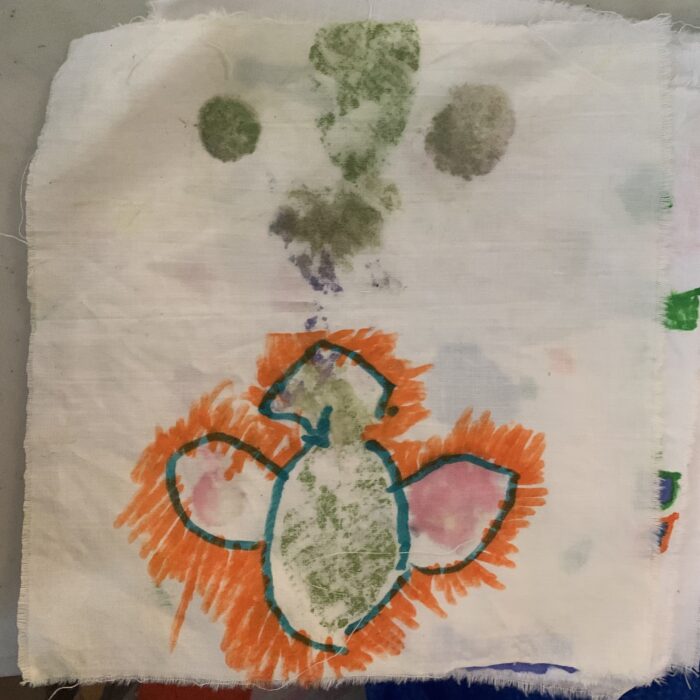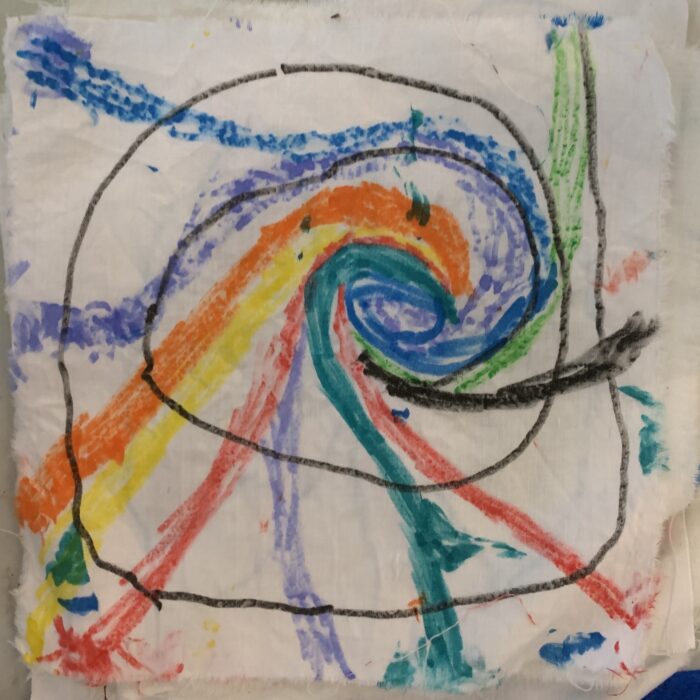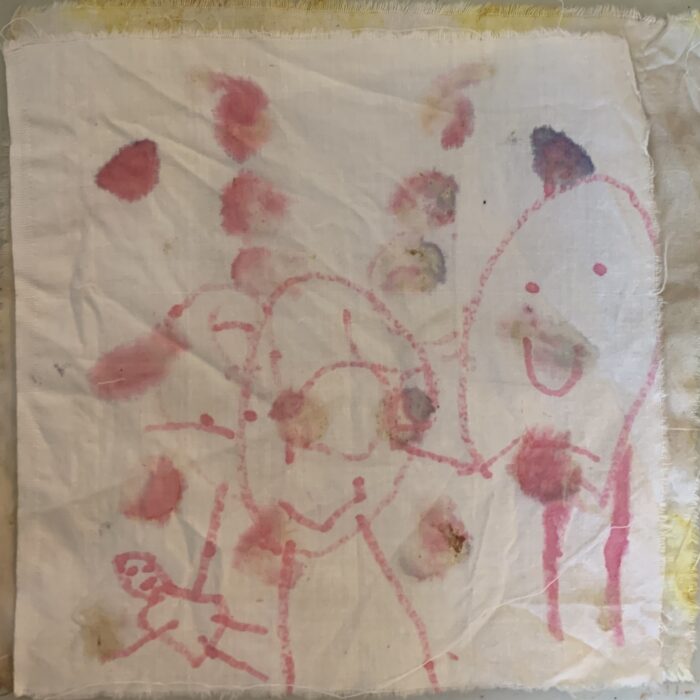Artasia at St. Patrick
Hamilton Wentworth Catholic Child Care Centres
🖌️ Artist Educator: Saadet Serra Hasiloglu
How Plants Speak: Things That Leaves and Flowers Tell Us
For our Week 3 activities of tie dye and flower founding, we were outside in a nice playground area with some small trees, sun, and the sand. The weather was perfect on this day, and such a nice atmosphere was set – perfect for our activity that aimed for the kids to develop deeper links with nature.
According to my experiences on previous sites, I thought it was a good idea for the kids to give our natural dyes (made of turmeric and beet) a smell. We had already confirmed if anyone was potentially allergic or sensitive to these materials, and thankfully they were safe to use. The kids’ reactions after smelling these dyes were quite interesting. They didn’t hate it but they realized the aromas of these materials are strong and confusing, but also with a certain extent of familiarity. When I asked them if they ever saw or tasted beet pickles, or perhaps ate rice with turmeric in it, they started making sense of the materials. There were no issues once it was the time to dip their tied fabric pieces into the dyes.
Moreover, when it came to introducing the flower pounding activity, I received mixed reactions. Since one of the major emphasis of our programming is recycling, hence protecting nature, the kids were confused about the ethics of pounding. One of them asked whether pounding on the leaves is hurting nature. I think this was such an insightful observation, and I had to think about how to properly reply to the question. I told them as per the flowers, I only picked the ones that were already detached from their roots due to the wind. As per the leaves, I also told them that I only picked the leaves that were eaten by the animals or about to dry because of the Sun. I also explained that this can be seen as nature giving us something – sharing its colors with us. So, as the pounding activity is a part of the art-making process, nature becomes a participant in our art. I think these replies resonated with them, because overall they enjoyed both of the activities. One tip I shared with them was following the outline of the leaves or flowers pounded and incorporating them into a larger design. One of the kids turned the pounded leaf mark into a turtle’s shell. Another kid made a butterfly with the leaves’ marks denoting the wings of the insect.
Both of these modified designs still had to do something with nature and its inhabitants, so this made me think that I was successful in guiding them to connect with the natural world. With the tie dye designs, I emphasized that the final products will be abstract, so we have to be open to distinct and unexpected designs. Some kids took this very well and created designs that enhanced the abstract and the chaos! Some other kids were a bit disappointed when they saw their tie dye design, saying that no clear pattern had arised. So I asked one of the kids to try and make an imagined tie dye design using the markers Overall, I felt like these two activities complimented each other pretty well, and kids left with positive memories and experimental designs!
Saadet can be found on Instagram here.



